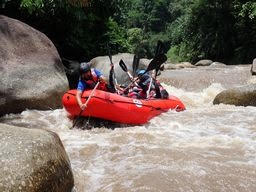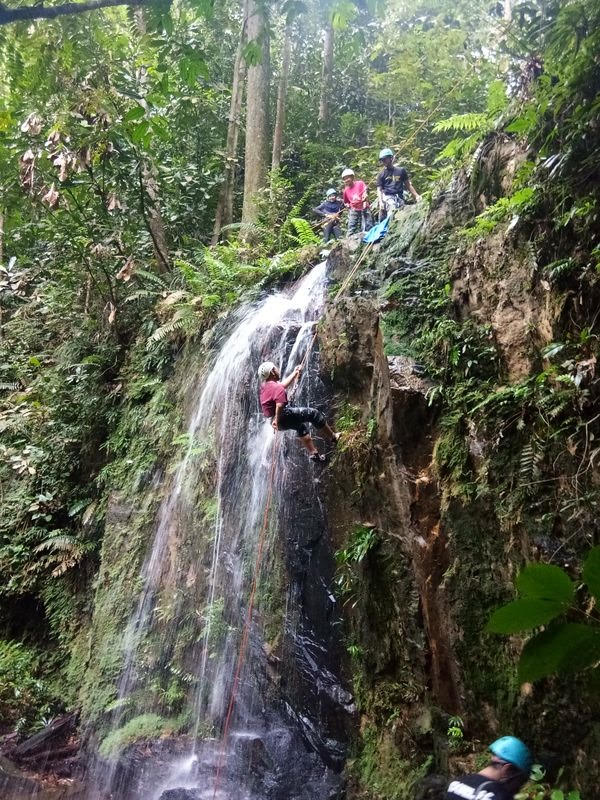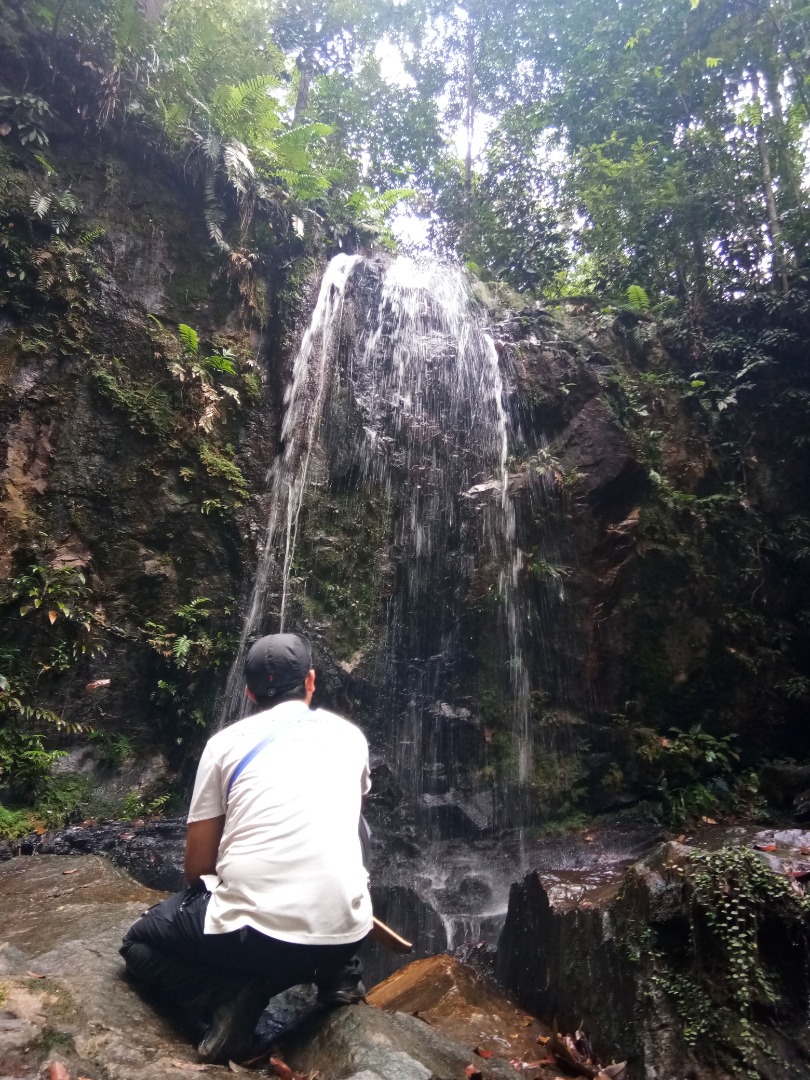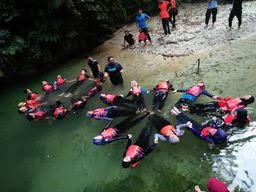Outdoor Recreation and Resource Sustainability
Outdoor recreation is conceptualised as a person’s leisure management where the activities is conducted in outdoor setting to revive senses, rejuvenate mind and revitalise the body for a healthy life. As a result, in the past years the demand for outdoor recreation in the natural environment such as rainforest and wetland areas has increased. This increase in demand for outdoor recreation is influenced by several factors such as;
Improvements in Accessibility and Infrastructures
Over the years, vast improvements have been made on the transportation systems such as road development to natural areas. This has definitely eased the access and movements of recreational users to the recreational sites. In fact, the development of infrastructure within the natural area has been developed to facilitate internal movement of various group users.
The Influence of Information Technology
The rapid dissemination of information in this century impacts the society particularly the young generations. Almost everyone owns a smartphone and subscribes to various social media platforms. Social media such as Facebook is now being used as a powerful marketing strategy where different designs, contents, text and visuals are able to influence people in decision making of purchasing. This is important in outdoor recreation industry where people depend on other people opinions to make choices regarding where to find the best location and ease of access for outdoor recreational activities.
User
Society is increasingly aware about the positive benefits in terms of physical and mental benefits gained from outdoor recreational activities. This made them more appreciative towards natural environment and motivates them to be more active in healthy lifestyle. In particular, those living in the city often visit the natural environment as a therapy to release the stress of work and life in thecity. Therefore, it is not surprising that most city dwellers nowadays are more motivated to engage in outdoor recreational activities in natural environments.
Disposable Income and Time
Malaysia is one of the countries with the most public holidays in Southeast Asia. Therefore, there are more opportunities to explore nature more often and plan longer vacations. In addition, regardless of financial status, engaging in outdoor recreational activities has now become more affordable for almost everyone. This is due to the increasing supply service for outdoor recreational activities that has created a competitive market price, leading to more affordable choices suited for various group of users and budget.
While outdoor recreation is becoming a trend that has its own positive benefits to society, this may take a toll on the environment itself. Consequently, the increasing demand for outdoor recreation may lead to the degradation of nature’s originality and quality. In future, the opportunity to be alone in nature such as enjoying the spectacular view at the hill top, or enjoying one’s privacy beside a clear riverside could be just a myth. People can no longer experience solitude and authenticity as increased participation affects the quality and value of a natural area. This has become a great dilemma for resource manager on balancing between the increased demand for outdoor recreational activities and at the same time ensuring resource sustainability. The reality is, the cause of the degradation on nature environment has been and is always related to human attitudes and behaviour. For example, there is limited knowledge among the users about the role of ecosystem such as the interaction between human and wildlife in natural area, or the interaction of repeated impact on trails. In addition, feeding the wildlife species such as monkeys, squirrels, or birds could change the behaviour of wildlife. This is worrying because some wildlife species can change behaviour from ‘friendly’ to violent and may lead to injury to the human, such as in many reported cases involving wildlife. Similarly, user behaviour of creating a new trail in recreational forest could lead to spread of resource degradation in another area. Additionally, this can potentially create confusion among other users and increase the risk of getting lost in the forest.
While outdoor recreation is becoming a trend that has its own positive benefits to society, this may take a toll on the environment itself. Consequently, the increasing demand for outdoor recreation may lead to the degradation of nature’s originality and quality. In future, the opportunity to be alone in nature such as enjoying the spectacular view at the hill top, or enjoying one’s privacy beside a clear riverside could be just a myth. People can no longer experience solitude and authenticity as increased participation affects the quality and value of a natural area. This has become a great dilemma for resource manager on balancing between the increased demand for outdoor recreational activities and at the same time ensuring resource sustainability. The reality is, the cause of the degradation on nature environment has been and is always related to human attitudes and behaviour. For example, there is limited knowledge among the users about the role of ecosystem such as the interaction between human and wildlife in natural area, or the interaction of repeated impact on trails. In addition, feeding the wildlife species such as monkeys, squirrels, or birds could change the behaviour of wildlife. This is worrying because some wildlife species can change behaviour from ‘friendly’ to violent and may lead to injury to the human, such as in many reported cases involving wildlife. Similarly, user behaviour of creating a new trail in recreational forest could lead to spread of resource degradation in another area. Additionally, this can potentially create confusion among other users and increase the risk of getting lost in the forest.
Therefore, in order to conserve the quality and values of natural resources, this raises the critical question of whether there is a need to limit the number users for outdoor recreational activities. This is not only aimed for balancing the resource ecosystem, but with a prefix number of users can be managed in more systematic and effective in order to maintain the quality of experience as well.
Undoubtedly, outdoor recreation is beneficial for our physical and mental health, more so if the activity can be done in a natural setting for enhanced quality recreational experience. Therefore, we need to educate ourselves through relevant source of information so that we can use and enjoy the natural resources in appropriate ways. If we fail to prevent our natural environment from degradation and eventual loss, it may be possible that our grandchildren can only experience the benefits of outdoor recreation in natural environment through historical videos and books. Thus, it is vital that we take the responsibility and immediate actions such as maintain cleanness of the site, not feeding the wildlife, not creating a new trail or damaging trees and plant to prevent the loss of the natural environment so that future generations can continue to enjoy outdoor recreational activities for.
Undoubtedly, outdoor recreation is beneficial for our physical and mental health, more so if the activity can be done in a natural setting for enhanced quality recreational experience. Therefore, we need to educate ourselves through relevant source of information so that we can use and enjoy the natural resources in appropriate ways. If we fail to prevent our natural environment from degradation and eventual loss, it may be possible that our grandchildren can only experience the benefits of outdoor recreation in natural environment through historical videos and books. Thus, it is vital that we take the responsibility and immediate actions such as maintain cleanness of the site, not feeding the wildlife, not creating a new trail or damaging trees and plant to prevent the loss of the natural environment so that future generations can continue to enjoy outdoor recreational activities for.

Figure 1. Adventure activity to stimulate group cohesion

Figure 2. Getting close to nature as natural therapy to mind, soul & body

Figure 3. Nature is a great teacher to develop confident

Figure 4. Challenge ourselves to the limit
 |
||||||||||||||||
| Faculty of Forestry and Environment, Universiti Putra Malaysia | ||||||||||||||||
| @forenvupm | @forenvupmi | 603-9769 7171 | https://forenv.upm.edu.my | dean.forenv@upm.edu.my | ||||||||||||
